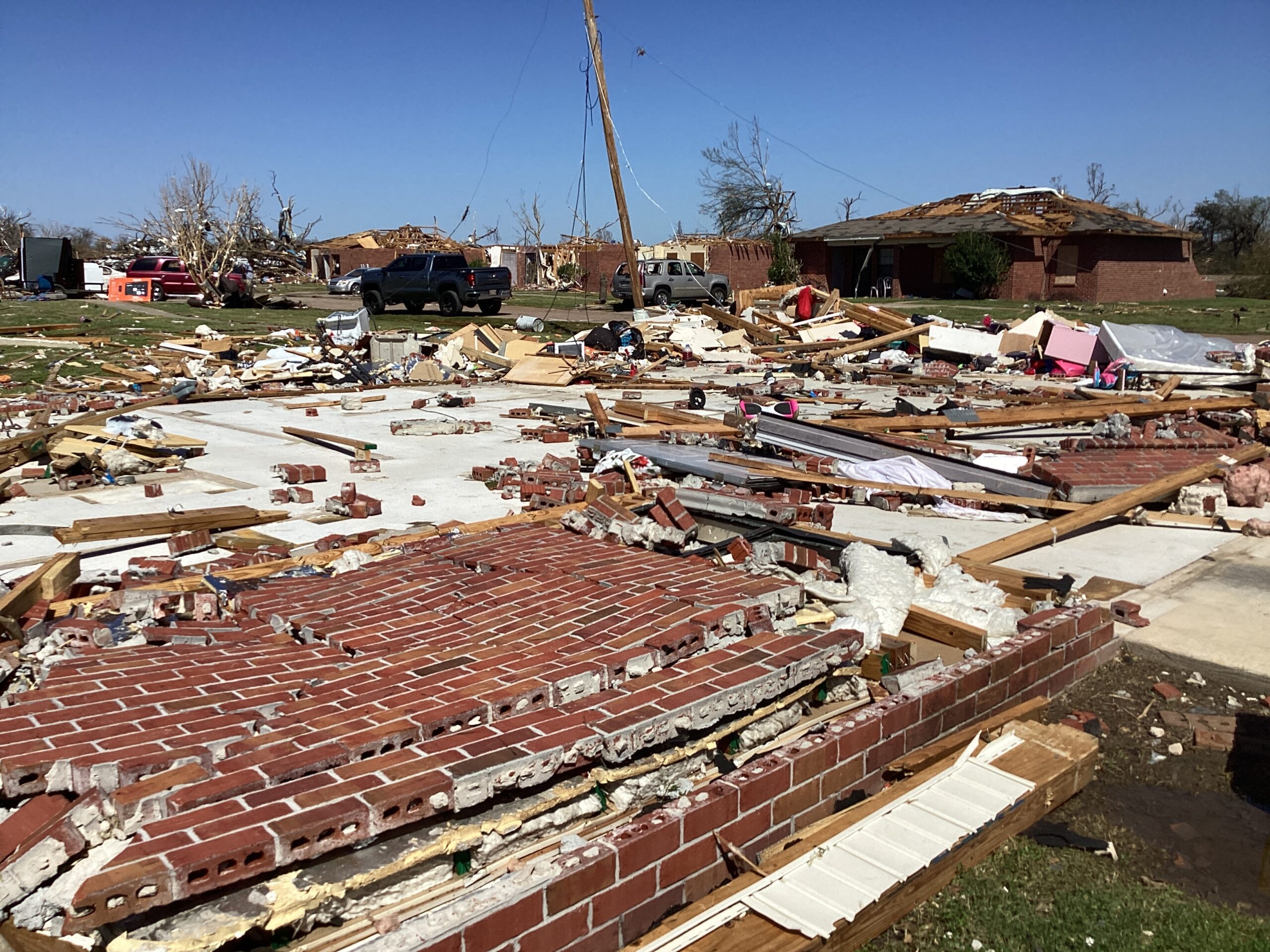Throughout the past two weeks, many regions of the United States (US) have experienced extreme weather and tornadoes. On Friday, March 24, severe storms produced more than 20 reported tornadoes across Mississippi and Alabama, including a long-track, catastrophic tornado that traveled 59.4 miles across west-central Mississippi, causing widespread destruction and at least 25 fatalities. According to the National Weather Service’s (NWS) preliminary storm data, the rural towns of Silver City and Rolling Fork, Mississippi, sustained significant damages to homes, businesses, and farmland as the tornado stayed on the ground for more than an hour. The tornado received a four out of five on the NWS’s Enhanced Fujita (EF) Scale and had maximum wind speeds of up to 170 miles per hour (mph). As of March 25, more than 40,000 customers had reported lost power across Mississippi, Alabama, and Tennessee, according to PowerOutage.us. A second round of tornadoes, striking Arkansas, Illinois, Iowa, Tennessee, and Wisconsin, led to 53,000 customers without power just one week later, on March 31.
Rolling Fork, Mississippi: Damage Assessment Toolkit
Governor Tate Reeves of Mississippi and Governor Sarah Sanders of Arkansas both declared states of emergency in their respective states following these deadly events. On March 26, President Biden approved Governor Reeve’s request for a major disaster declaration making Federal Emergency Management Agency (FEMA) Individual (IA) and Public Assistance (PA) funding available for eligible residents in Carroll, Humphreys, Monroe, and Sharkey counties impacted by the March 24 storms. President Biden made additional assistance available for debris removal and emergency protective measures during a visit to Rolling Fork, Mississippi, on March 31.
During his visit to Rolling Fork, the President assured residents that FEMA is “authorizing cash grants for people who lost their homes, whether they own or rent, to pay for things that may not be covered by insurance, like temporary housing, home repairs for those who have homes still standing, or to replace lost personal property, like furniture and appliances.” Following statements made in Mississippi, President Biden approved Governor Sanders’ request for federal assistance, making FEMA IA and PA available to residents in Cross, Lonoke, and Pulaski counties. In addition, the Internal Revenue Service (IRS) released a statement on April 3, allowing Arkansas storm victims additional time to file federal individual and business tax returns, extended from April 18 to July 31, 2023.
Tornadoes, severe thunderstorm gusts and large hail are possible today and tonight from the Upper Great Lakes to central Texas. Tornado potential is focused today over parts of Iowa/Illinois this afternoon, and especially tonight over parts of the Ozarks to the Arklatex region. pic.twitter.com/8oQZh5Ltpx
— National Weather Service (@NWS) April 4, 2023
Twitter: NWS
FEMA defines a tornado as “violently rotating columns of air that extend from a thunderstorm to the ground” and notes that tornados can happen at any time or anywhere, will likely bring intense winds, and appear like funnel clouds. Because tornados can occur at any time, it is important to pay close attention to local weather alerts that will inform you of potential dangers. According to NWS, A ‘tornado watch’ indicates there currently are conditions that make tornados possible, and individuals in affected areas should be prepared. A ‘tornado warning’ means that a tornado has been sighted or indicated by weather radar, and residents should act and seek shelter immediately. Ready.gov provides the following guidance for individuals seeking shelter during a tornado.
- Seek shelter in a safe room, basement, or storm cellar. If you don’t have these options, seek shelter in a small interior room on the lowest level possible and stay away from windows, exterior doors, and outside walls.
- If you are outside, try to find shelter in a sturdy building, if possible.
- If this is not possible, you are most safe in a low, flat location. Do not get under an overpass or bridge.
- Beware of flying debris, and use your arms to protect your head and neck.
It is important to prepare before a tornado occurs. The best option to prepare a safe place to be during a tornado is to construct a storm shelter that follows the International Code Council (ICC) standards for storm shelters. If this is not possible, ensure that a room in your home or business is fortified for use during a tornado. The best rooms will be on the lowest level, away from exterior walls or windows, and underground is the best choice. Manufactured or temporary structures, such as mobile homes or RVs, are unsafe during a tornado. Identifying an alternate shelter is critical if you are in a manufactured structure.
Once the tornado has passed, it is important to continue to monitor local emergency alerts and wait until relevant authorities have given the all-clear before leaving the shelter. If there are impacted or damaged buildings in your area, do not enter until local authorities tell you it is safe to do so. Broken glass, structural collapse, and shifting rubble can be hazardous. If you are trapped after a tornado, it is important to keep your movements to a minimum and cover your mouth with a cloth or mask to avoid breathing in dust and attempt to alert authorities of your presence by making noise, if possible. If you have lost power after a tornado or other severe storm, always remember to only use a generator outdoors and away from windows to avoid poisonous carbon monoxide exhaust from entering a space.
